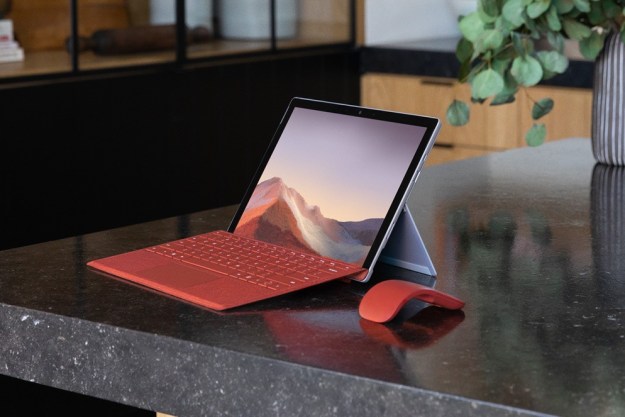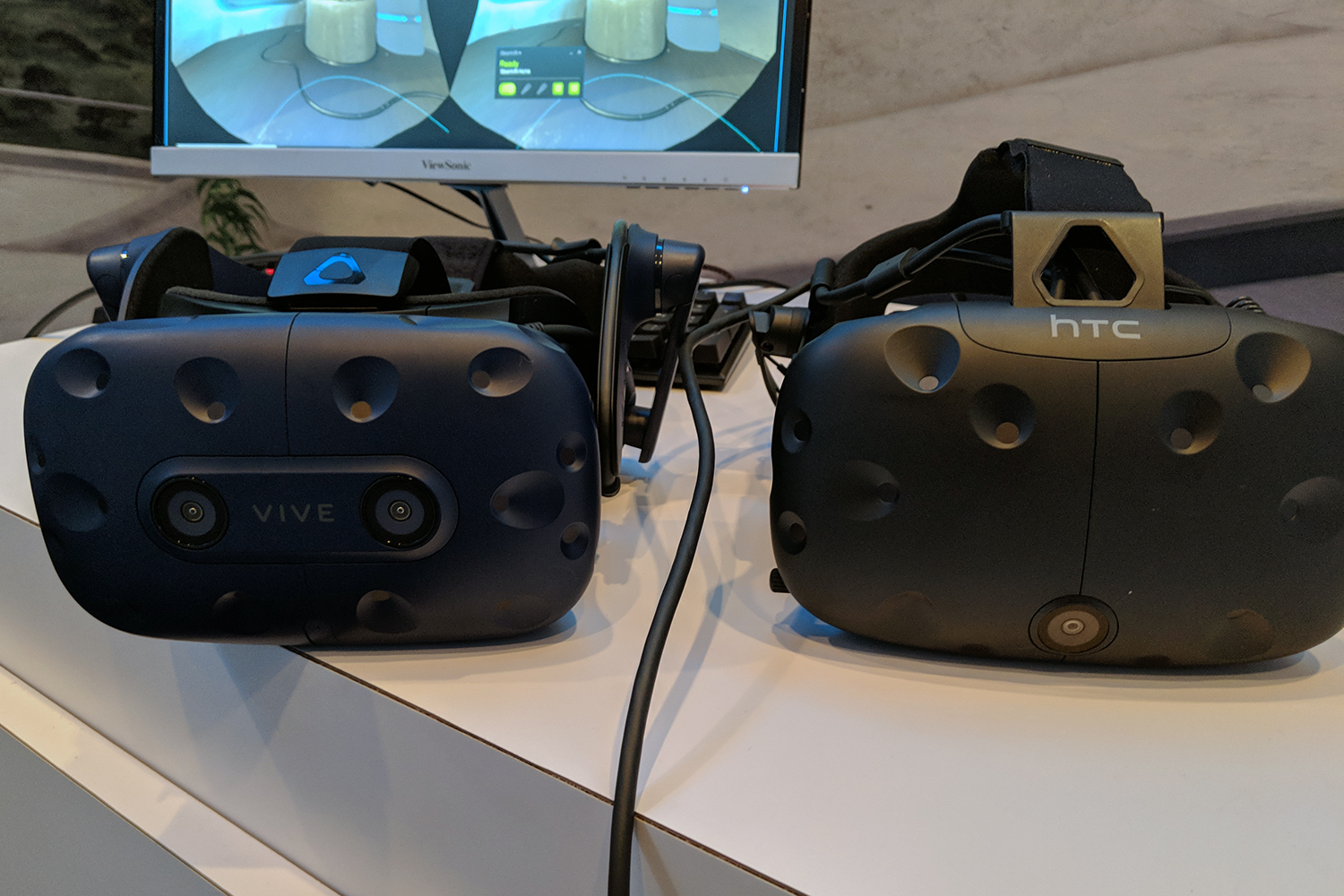
As much as Oculus’ new Go and Quest headsets have exciting potential for easy VR-accessibility, when it comes to high-end, mainstream VR headsets, the HTC Vive Pro — at least by the specifications — sits at the top of the heap. It’s a headset that upgrades the original design in a few exciting areas.
To see how much of an upgrade though and whether it’s worth you shelling out for the new Vive — especially if you already own the original one — we’ve pitted the HTC Vive versus the Vive Pro to see how they compare head to head. Keep in mind, these are both 2018 models, but HTC announced two new headsets at CES 2019. The new HTC Vive Pro includes full support for integrated eye tracking.
Design
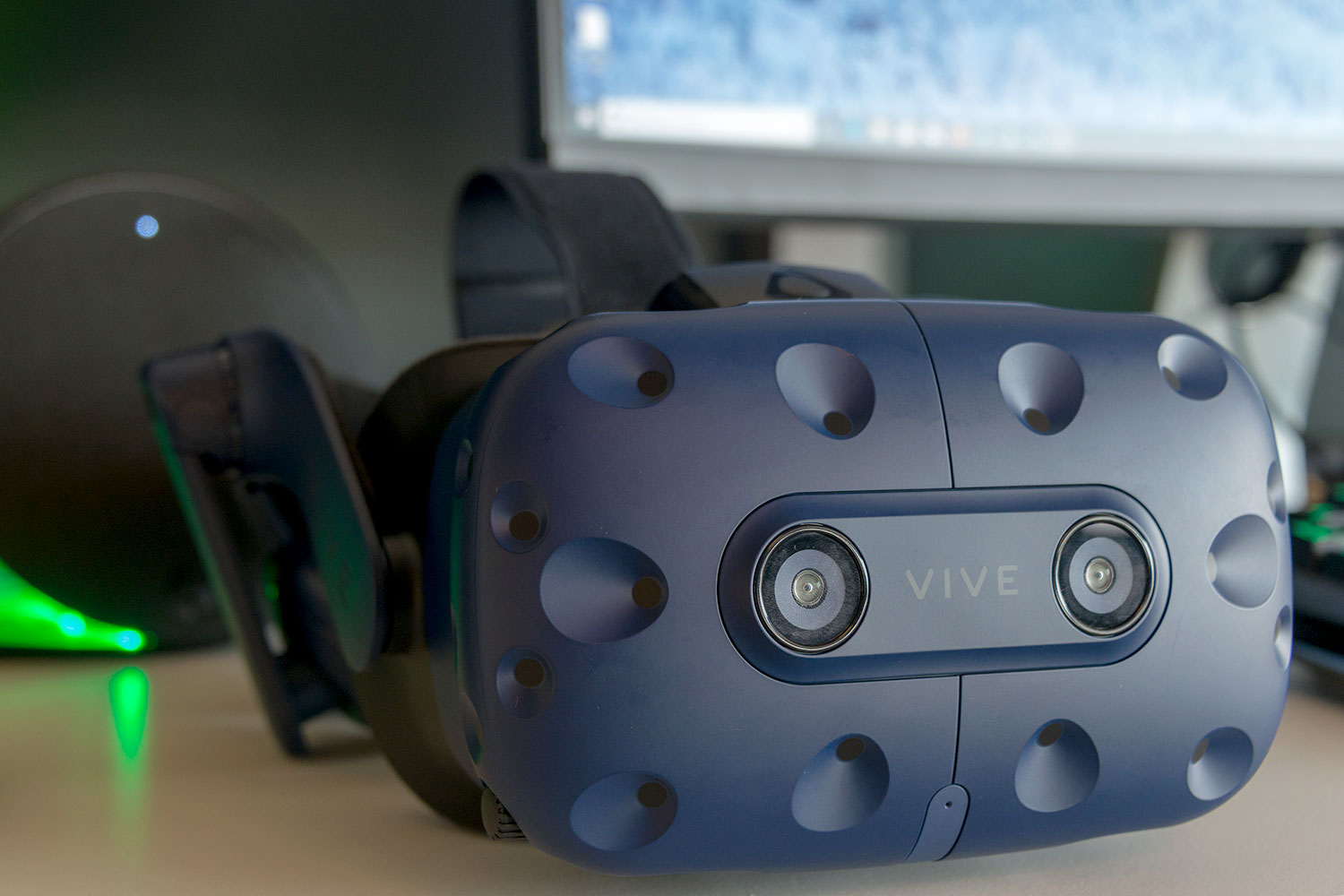
The Vive and Vive Pro aren’t drastically different to look at, but there are some notable changes. The Vive Pro has drawn inspiration from the Deluxe Audio Strap upgrade for the original Vive, and features a firmer headstrap which can be adjusted by a dial at the rear, rather than the velcro straps of the original headset.
It also comes with built-in headphones which can be tilted away from the user’s ears to make it easier to hear what’s going on in the room around you. Both headsets still field a full suite of obvious external sensors, something that makes the Vive range stand out (at least visually) from its fabric coated counterpart in the Oculus Rift.
From the front, the Vive Pro has dual cameras, rather than the Vive’s singular central lens. That can be used for pass-through video, as well as augmented reality in some settings.
In our review, we noted that none of the added features of the Vive Pro appeared to have made it heavier. Indeed if anything, the weight distribution is much improved. Along with thicker padding on the face plate, you can easily wear the Vive Pro for hours and not come away with the telltale impressions on your skin that the Vive so commonly imparted. The redesigned padding should also support a wider array of nose shapes too.
Those more nuanced ergonomics also extend to glasses wearers. Although the Vive Pro isn’t perfect, its controls for adjusting the distance between the lenses and the distance between the user’s eyes and lenses, make it easier to wear the Vive Pro while wearing glasses than its predecessor. That’s useful for those with long eyelashes too.
Display quality, field of view
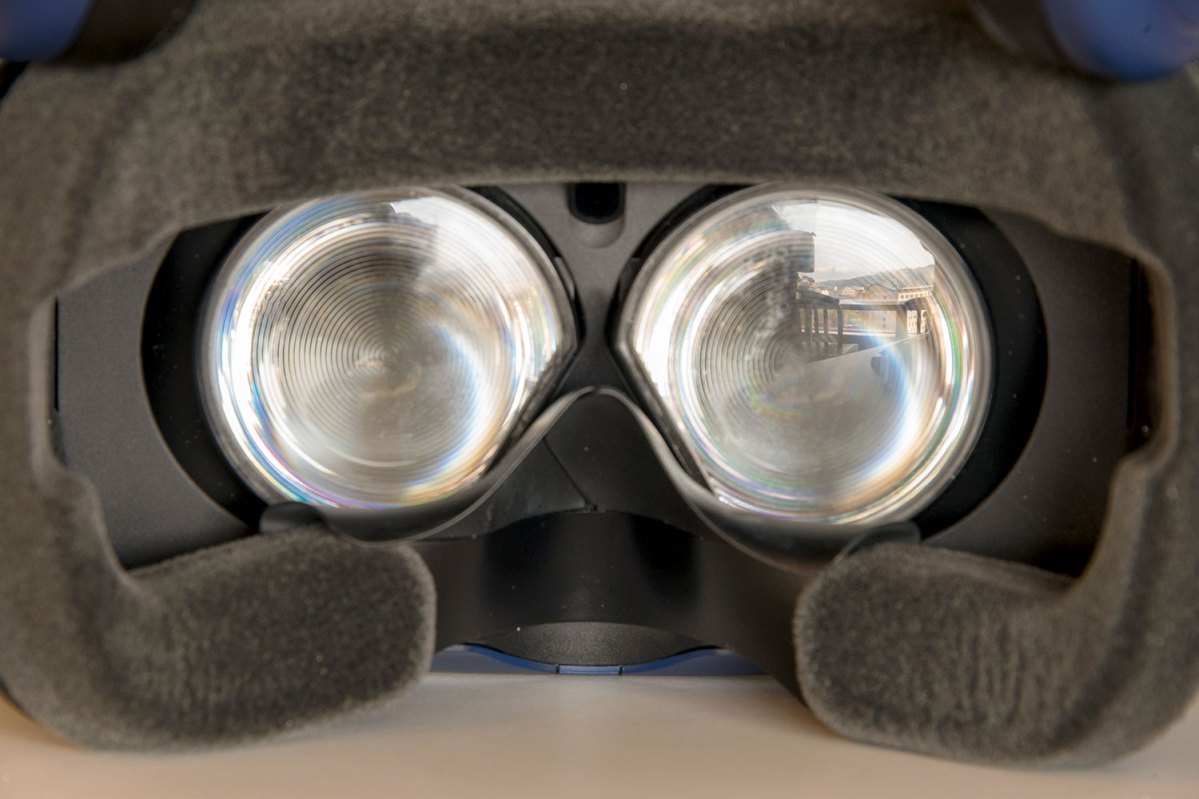
The biggest upgrade with the Vive Pro is its display. It uses AMOLED, rather than OLED technology for its dual panels, and increases the number of pixels by almost 80 percent. The Vive runs at 2,160 x 1,200, while the Pro runs at 2,880 x 1,600. That results in an obvious improvement in detail thanks to the improved pixel density of 615, versus the Vive’s 448.
That makes objects more detailed and crisp, especially at distance, further improving immersion and making it possible to enjoy larger, open areas, even if you are playing in a limited physical space. It also makes it near impossible to see subpixels (the colored dots within pixels) and reduces the so-called “screen-door effect” where you can visibly make out the lines between the pixels.
Field of view has remained the same across both headsets, as have the lenses, as RoadToVR confirmed, which means you can expect the same auras around light objects in dark scenes.
Audio
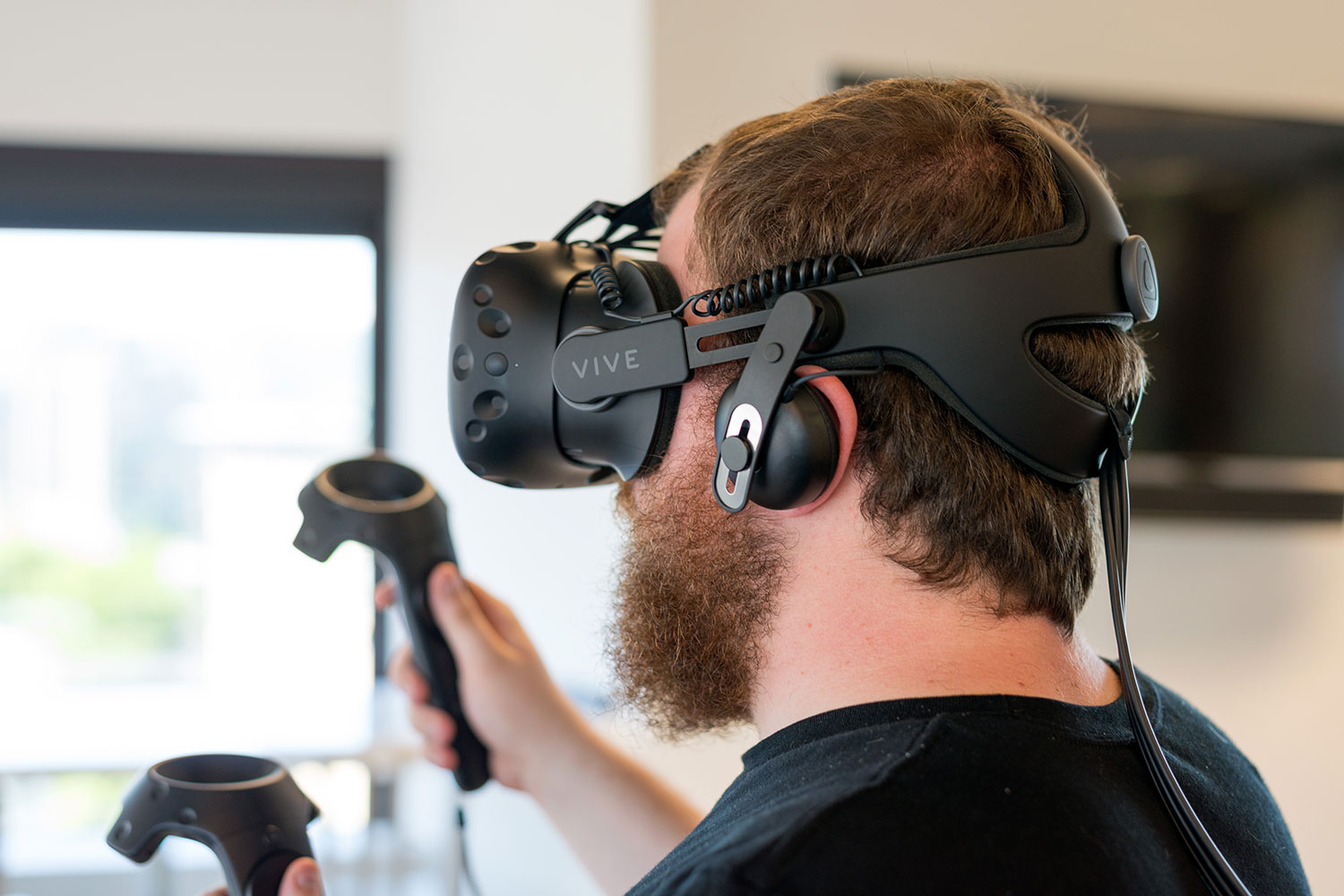
The HTC Vive has an easily accessible 3.5mm connector and bundled earbuds. They are practical, if inelegant, but do make it possible to use a third-party headset if required. The aftermarket extra, the Deluxe Audio Strap, adds a firmer headband with built-in
The Vive Pro is similar to the Vive with that improved headstrap. It has the same built-in
Alongside the new
It also has a physical headset volume control, so you don’t have to open up the SteamVR dashboard to alter noise output, and a physical mute button, making it quick and easy to shutdown your microphones for privacy reasons, or to converse with someone in the real world.
Performance and requirements
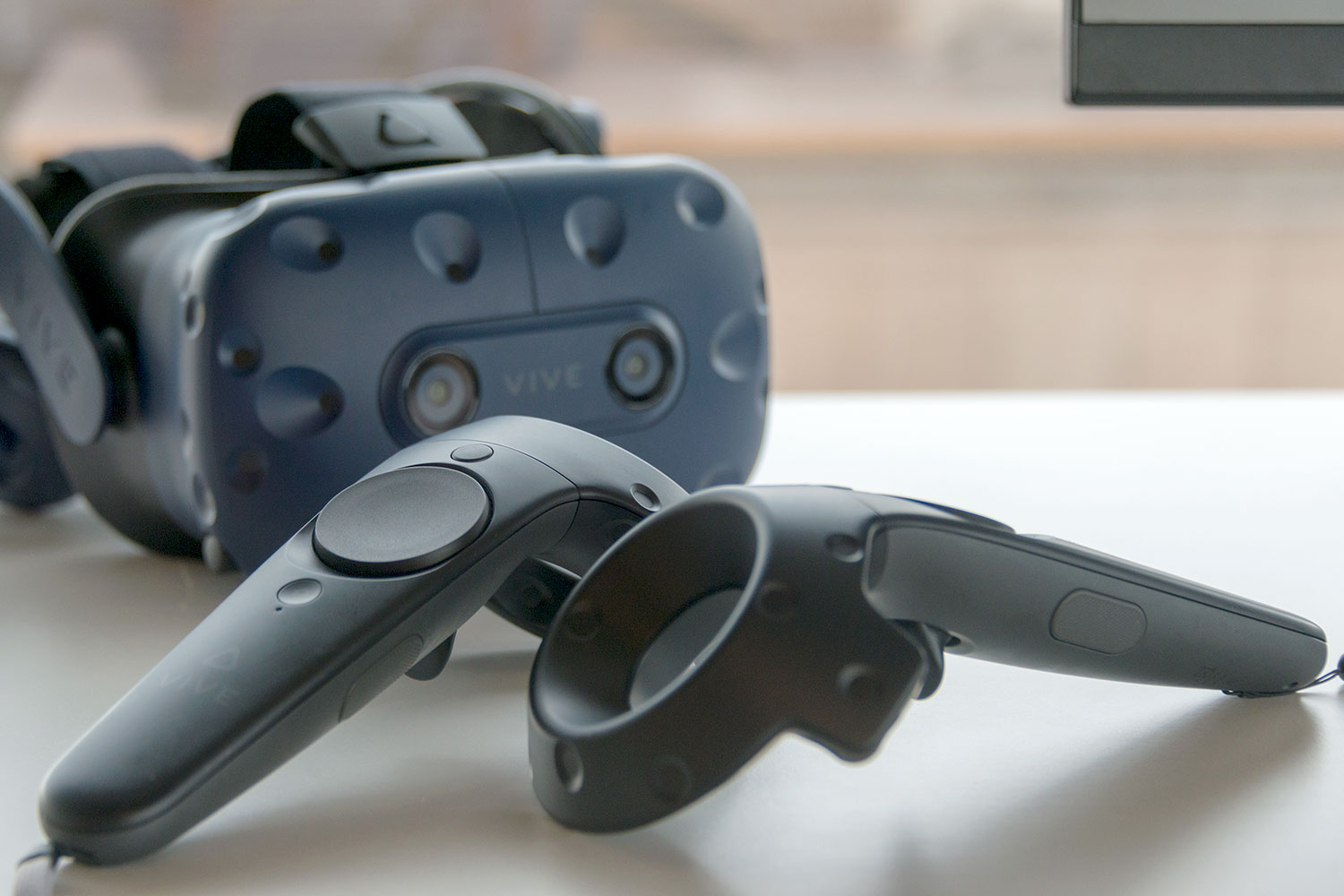
Virtual reality headsets need reasonably hefty hardware to be able to hit the 90 frames per second rate that is required for comfortable VR usage. The Vive’s specifications aren’t quite as strenuous as they were in 2016 and graphics cards and processors have come on a lot since then.
The Vive Pro doesn’t change things up too much, with no more taxing requirements for RAM or CPU speed. However, it does demand a newer generation of graphics card: at least a GTX 1060 or RX 480. The recommended specifications demand a GTX 1070 or Vega 56
Also of note, the Vive Pro is not listed with Windows 7 support, requiring either Windows 8.1 or Windows 10 to function.
The Vive Pro’s upgrades don’t justify the price

The HTC Vive will always hold a special place in our heart as being the first headset to truly introduce us to the immersive world of roomscale virtual reality with proper motion controllers. Even more, it’s been able to hold its own over the near two-years since its release as well, despite increased competition. It’s also come down in price a lot since then, with a $500 price tag netting you the headset, two controllers and a pair of Lighthouse trackers.
The Vive Pro offers some great upgrades over that original design, but it’s $800 for the headset alone, and $1,400 with two controllers and Lighthouse trackers as part of the Vive Pro Full Kit bundle. From our use, that’s just too much for us to recommend, especially since the Vive’s price is so much more reasonable today than it was at launch.
With improved audio, visuals, tracking solutions, and ergonomics, it’s hard to see the Vive Pro as anything other than a step up from the HTC Vive. It’s undoubtedly the best VR headset you can buy, but it’s out of the price range for anyone but the most enthusiastic VR early adopters.
Editors' Recommendations
- Google Drive vs. Dropbox: which is best in 2024?
- The best MacBook to buy in 2024
- The MacBook Air 15 vs. MacBook Pro 14: the easy way to decide
- The best VR apps for 2023
- The best laptops under $1,000, tested and selected by experts



